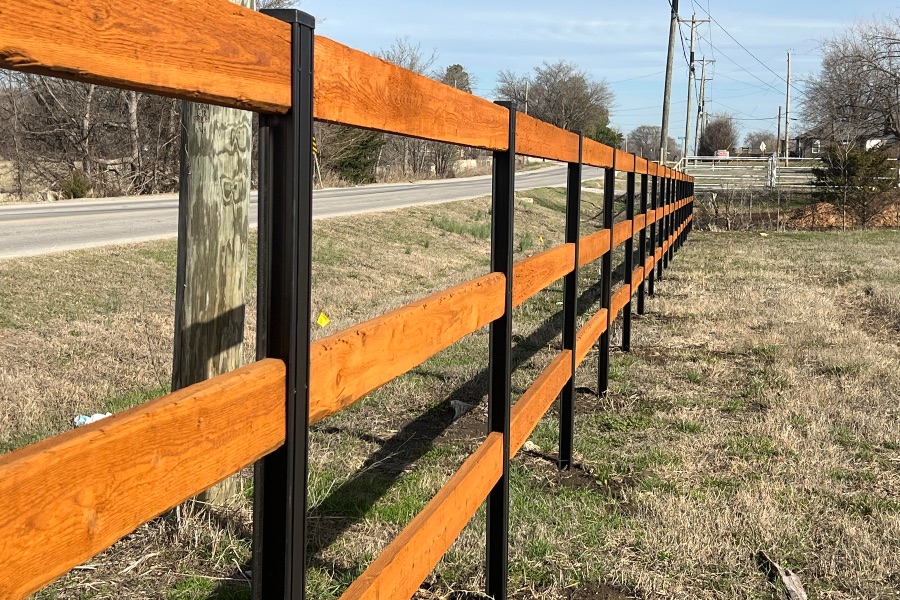All Categories
Featured

Your fence is an important component of your residential property, supplying personal privacy, curb, and safety charm. There are numerous strategies you can implement to safeguard your fencing and lengthen its life.
- Pick the Right Material. The very first action in protecting your fencing from weather-related damages is to select the appropriate material for your climate. Some products are more immune to the elements than others.
Wood Fencings: While conventional wood fences offer an all-natural, appealing appearance, they are particularly at risk to water damages, rot, and pest infestation. If you select wood, select pressure-treated lumber or wood kinds that are much more immune to wetness, such as cedar or redwood. Plastic Fencings: Vinyl is a low-maintenance choice that resists fading, fracturing, and bending. It's additionally immune to rot and bugs, making it excellent for locations with high moisture or exposure to rain. Steel Fencings: Light weight aluminum and functioned iron fences are immune and durable to weathering. Nevertheless, they can rust if revealed to moisture for extended durations. Choose a powder-coated or galvanized metal fence to minimize the risk of corrosion. Compound Fences: These are made from a blend of timber fibers and plastic, supplying the most effective of both globes-- resilience and a natural appearance. Composite fences are resistant to moisture, fading, and rotting, making them fantastic for environments with constant rainfall or snow. 2. Apply Safety Coatings. Despite the product, applying a protective layer can assist secure your fence from climate damage.

Wooden Fences: A good-quality tarnish or sealer can aid safeguard your wood fence from moisture, UV rays, and insects. These finishings develop an obstacle that protects against water from seeping into the wood and creating rot. You need to use a fresh coat of discolor or sealer every pair of years, depending upon your climate and the level of direct exposure to rainfall and sunshine. Plastic Fences: Although plastic fences are normally immune to weathering, they can still experience staining as a result of the sunlight's UV rays. You can use specific vinyl cleaners or UV protectants to keep the shade and appearance of your fencing. Metal Fences: For metal fences, take into consideration applying a rust-resistant primer and a coat of paint made for outdoor use. Powder coating is an additional exceptional choice for steel fences, as it produces a sturdy, weather-resistant surface that stands up to corrosion and rust. 3. Regular Cleansing and Upkeep. Preserving your fencing consistently is vital to protecting against damage from the aspects. Dirt, leaves, and other debris can develop on your fence, which can cause discoloration, mold, and mildew over time.
Wood Fencings: Clean your wooden fencing every six months with a moderate detergent solution or a pressure washing machine (on a reduced setting) to eliminate dust and crud. Maintain an eye out for very early indications of rot, particularly at the base of the fencing posts where dampness often tends to collect. Vinyl Fences: Plastic fencings are simple to clean with soap and water. If you discover mold or mold, use a mixture of vinegar and water to delicately scrub the impacted areas. Prevent harsh chemicals that could damage the surface. Steel Fences: On a regular basis clean steel fences with a soft fabric or sponge to get rid of rust-causing debris. For functioned iron fences, take into consideration applying a rust-inhibiting product to stop deterioration. 4. Correct Setup and Positioning. Correct setup of your fence can go a long way in protecting it from weather-related damage. Make certain that your fencing is firmly secured which messages are set deep enough into the ground to avoid shifting during heavy winds or tornados. Installing supporting at essential points can supply extra assistance. if your fence is subject to heavy winds.
In addition, consider the positioning of your fence. Plant hedges or trees tactically around your fence to give some natural protection from severe winds, intense sunshine, or driving rain if feasible. Be cautious not to plant also close to the fence, as roots can damage or change articles over time.
- Address Storm Damage Rapidly. Tornados, specifically those with high winds or hail storm, can cause immediate damage to your fencing. After a tornado, evaluate your fence for broken areas, leaning posts, or fallen debris.
- Winterize Your Fencing. Cold temperature levels and ice can be particularly harming to wooden fences. To avoid this, make sure that the base of your fencing messages is elevated and not resting in pooled water.
Conclusion. Weather-related damages is an unpreventable component of owning a fence, however with the appropriate preventative measures and regular upkeep, you can significantly extend the life of your fence. Choose sturdy products matched for your climate, apply safety finishings, tidy routinely, and make sure proper installation. With these actions, you can safeguard your fencing from the elements and maintain its appearance and capability for years to come.
Latest Posts
Grab Exclusive Auto Repair Offers in Chicago at Montclare Auto Repair
Published May 25, 25
1 min read
Explore WyHy FCU – Top Benefits for Your Future
Published May 23, 25
1 min read
Discover Your Financial Partner at WyHy – Essential Perks for Your Financial Success
Published May 21, 25
1 min read
More
Latest Posts
Grab Exclusive Auto Repair Offers in Chicago at Montclare Auto Repair
Published May 25, 25
1 min read
Explore WyHy FCU – Top Benefits for Your Future
Published May 23, 25
1 min read
Discover Your Financial Partner at WyHy – Essential Perks for Your Financial Success
Published May 21, 25
1 min read